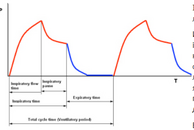Hi,
Hopefully my last post here for a few days I've been asking alot of questions
At the moment I am inhaling/exhaling around 50-70% of lung capacity which is causing me to ascend or descent around 1 metre at a time. My instructor noticed this and said I was a "top of the lung" breather and should work on doing more diaphragm breathing.
Question: Can I do really small inhale/exhales like I would do at complete rest on land? Say sitting at a desk etc. kind of breathing. Whenever I watch dive videos on youtube etc. I notice that breaths are taken approx once every 10 seconds. Would it be a disadvantage to complete a full breathing cycle every 5 seconds if it was very shallow as this is the most comfortable/natural way of breathing for me? Or should I work on this and try what my instructor suggested? Thanks!
Hopefully my last post here for a few days I've been asking alot of questions
At the moment I am inhaling/exhaling around 50-70% of lung capacity which is causing me to ascend or descent around 1 metre at a time. My instructor noticed this and said I was a "top of the lung" breather and should work on doing more diaphragm breathing.
Question: Can I do really small inhale/exhales like I would do at complete rest on land? Say sitting at a desk etc. kind of breathing. Whenever I watch dive videos on youtube etc. I notice that breaths are taken approx once every 10 seconds. Would it be a disadvantage to complete a full breathing cycle every 5 seconds if it was very shallow as this is the most comfortable/natural way of breathing for me? Or should I work on this and try what my instructor suggested? Thanks!





